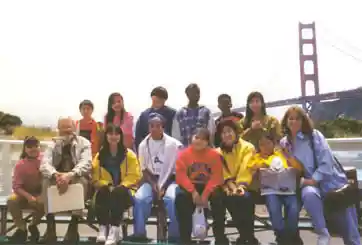Advocacy, Planning, and Coalition-Building
One of Bay Area Women’s & Children’s Center’s two major program areas is Advocacy/Neighborhood Development. This work includes: advocacy, planning, policy work, community education, and coalition building. BAWCC’s work on the issues of low-income families and children has resulted in significant and measurable changes during the past three decades. This includes the construction of five city playgrounds, a recreation center, and a 360-student public elementary school with an on-site family center run by BAWCC.
BAWCC’s advocacy and community education work has affected city and state policies related to many areas in the lives of children and families. Some of the strategies and programs have included:
Tenderloin Kids Count – Since 1984, BAWCC has conducted several building-to-building surveys throughout the whole Tenderloin neighborhood. In these Kids Counts, BAWCC collects the numbers, ages, and race-ethnic origins of the children living in the Tenderloin. BAWCC staff members and interns conduct this survey with graduate students from UC Berkeley, Stanford, and other graduate programs. The information collected through the Kids Count is disseminated to other local organizations and city departments who can then use this documentation to support the expansion of services and programs for Tenderloin children and families.
Tenderloin NETWORK of Children, Youth, and Family Services – “NETWORK”, facilitated by BAWCC’s executive director since 1984, brought together staff of organizations that provide services to children, youth, and families in the Tenderloin. This provided an opportunity to share information on resources and programs to benefit the community.
Surveys of Tenderloin Children and Family Issues – BAWCC conducts comprehensive, neighborhood-wide surveys on the issues related to families and children living in the Tenderloin. BAWCC then uses this information to generate long-term programs. It also uses the information gathered to initiate advocacy projects. For example, BAWCC’s campaign to get the Tenderloin Community Elementary School built was initiated after our 1990 Survey that identified problems related to young Tenderloin children’s access to education.


